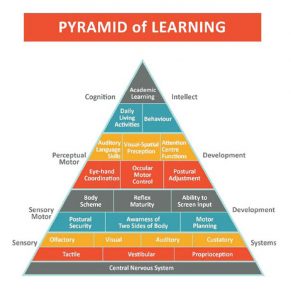
As Cornerstone’s occupational therapist (OT), I target areas including fine motor development, gross motor skills, written communication/expression (handwriting and typing skills), personal information, and visual motor/visual perceptual skills. These domains are addressed through therapeutic and academic activities both individually and during whole group learning times. Activities of daily living (ADLs), including but not limited to self-care, executive functioning, organization/time management, social participation, and school participation, are targeted to each child’s specific needs and individual goals. A big part of my job is to help the students with sensory processing and self-regulation (the ability to adjust or regulate the level of alertness depending on the time of the day and the stimuli presented).
I am trained in sensory integrative therapy and use this approach to help the students achieve an optimal level of arousal and alertness, ideal for listening and learning. Sensory integration focuses primarily on three basic senses–tactile (touch), vestibular (movement, balance, head position), and proprioceptive (body awareness). Their interconnections start forming before birth and continue to develop as the person matures and interacts with his/her environment. The three senses are not only interconnected but are also connected with other systems in the brain. The inter-relationship among these three senses is complex. Basically, they allow us to experience, interpret, and respond to different stimuli in our environment.
During the school day, I embed therapeutic activities that provide input at the base of the pyramid to achieve pieces at the top. By providing various types of input, I am helping set the students up for academic success! The chart below shows how intricate and detailed the process of learning is for a child. OT supports the child in achieving all building blocks of the hierarchy.




